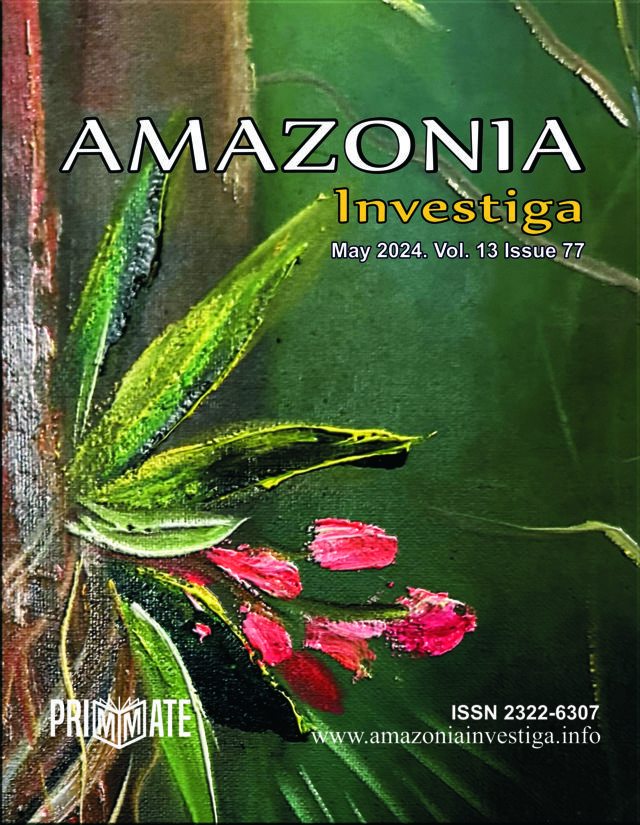Ethnic stereotypes: eliminating prejudice in intercultural communication
Publicado 2024-05-30
Palabras clave
- Intercultural communication, ethnic stereotypes, strategies for overcoming ethnic stereotypes, ethnic communities, effective communication.
Cómo citar
Derechos de autor 2024 Amazonia Investiga

Esta obra está bajo una licencia internacional Creative Commons Atribución 4.0.
Resumen
In the process of interaction between representatives of different cultures, ethnic stereotypes often become key factors affecting the effectiveness of intercultural communication. They can both facilitate mutual understanding through simplified perception and create barriers, leading to misunderstanding and conflicts. This article is devoted to the analysis of the theoretical foundations of ethnic stereotypes and the development of strategies aimed at overcoming them in the context of intercultural communication, which is crucial for establishing dialogue in a diverse world.
Previous research in the field of ethnic stereotypes primarily seeks to establish a theoretical framework, classify these prejudices, and examine their impact on social and interpersonal relationships. Utilising multidisciplinary approaches, these works significantly enhance comprehension of this phenomenon, providing examples from diverse sectors of society. However, this study aims not only to systematise and summarise the existing theoretical foundation, but also to expand the analytical viewpoint to incorporate facets of strategy development and implementation targeted at mitigating the impact and dissemination of ethnic stereotypes. This study aims to identify effective measures for preventing and correcting stereotypical perceptions in intercultural communication, which inevitably arise in multi-ethnic societies. By doing so, it aims to contribute to the promotion of socio-cultural dialogue and mutual understanding.
Descargas
Citas
- Adams, J. (1997). Are you ready for the new millennium? HR Magazine, 8.
- Blair, I. V., Judd, C. M., & Fallman, J. L. (2004). The Automaticity of race and Afrocentric facial features in social judgments. Journal of Personality and Social Psychology, 87(6), 763-778. https://doi.org/10.1037/0022-3514.87.6.763
- Barna, L. M. (1997). Stumbling blocks in intercultural communication. Belmont: Wadsworth Publishing. Recovered from: https://acortar.link/RPMy6p
- Dökmen, Z. (2012). Social Psychological Explanations of Gender. Istanbul: Remzie Bookstore. Recovered from: https://www.remzi.com.tr/files/books/1724/dosya/toplumsal-cinsiyet-on-izleme.pdf
- Grushevickaya, T.G. (2002). Fundamentals of intercultural communication: textbook for universities. Moscow: Unity-Dana.
- Hall, E. T. (1959). The silent language. Garden City, NY: Anchor Books/Doubleday. Recovered from: https://acortar.link/JYgRcT
- Harris, P., Moran, R., & Moran, P. (1991). Managing cultural differences (3rd ed.). Houston, TX: Gulf. Recovered from: https://acortar.link/loSP2x
- Klimova, I. I., Zhukova, T. A., Cameron, D. I., Kozlovtseva, N. A., & Chernyishkova, N. V. (2023). Training students for intercultural communication in a dynamic world: a challenge in continuing education. Amazonia Investiga, 12(62), 132-139. https://doi.org/10.34069/AI/2023.62.02.11
- Krysko, V. G. (1999). Ethnopsychological dictionary. Moscow: MPSI, 1999, 342 p. ISBN 5-89502-058-5. Recovered from: https://rus-ethnopsychology-dict.slovaronline.com/
- Leonard, K. M., Van Scotter, J. R., & Pakdil, F. (2009). Culture and communication: Cultural variations and media effectiveness. Administration & Society, 41(7), 850-877.
- Lippmann, W. (1922). Public opinion. New York: MacMillan. Recovered from: https://acortar.link/zvx9q4
- Martynova, N. A. (2007). Intercultural communication as a special type of communication. ONV, 2, 196 p. Recovered from: https://acortar.link/sBeukf
- Mockaitis, A. (2009). Culture and Communication: Cultural Variations and Media Effectiveness. Administration Society, 41(7), 850-877. Recovered from: https://www.academia.edu/81613771/Culture_and_Communication
- Sadokhin, A. P. (2004). Theory and practice of intercultural communication: Textbook for universities. Moscow: UnityDana, 271 p. Recovered from: https://acortar.link/2NEnOJ
- Ter-Minasova, S. G. (2008). Language and intercultural communication. Moscow: Moscow University Press. ISBN: 978-5-211-05472-1
- Watson-Manheim, M. B., & Belanger, F. (2007). Communication media repertoires: Dealing with the multiplicity of media choices. MIS Quarterly, 31, 267-293.
- Yao, C. (2022). Ethnocultural and gender stereotypical concepts of intelligence: chinese and russians. Bulletin of Perm University. Russian and foreign philology , 14(1), 81-95.
- Zhukova, T. A., Bogoslovsky, V. I., Ivashkina, O. A., Kozlovtseva, N. A., & Khalevina, S. N. (2023). Initiatives and the process of the development of regional students’ cross-cultural communication skills. Amazonia Investiga, 12(61), 145-154. https://doi.org/10.34069/AI/2023.61.01.15











